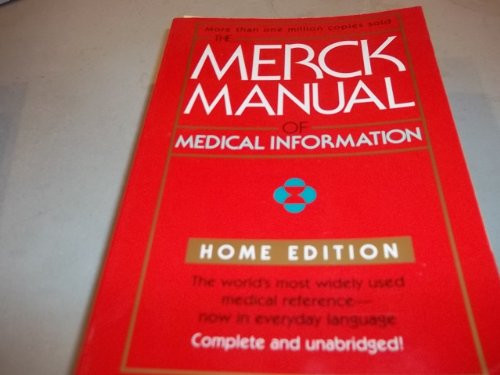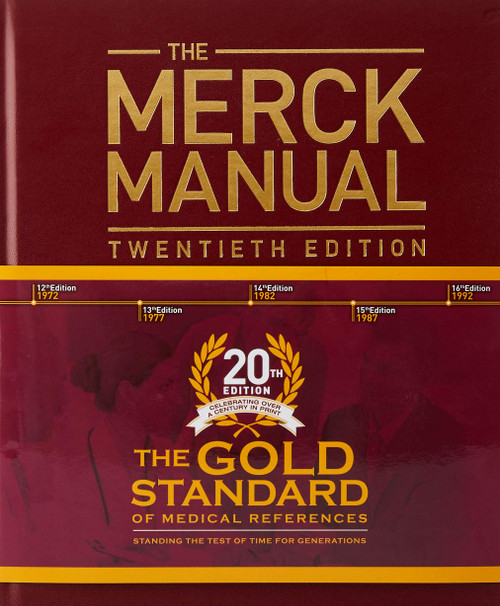The world's most widely used medical reference is now better than ever!
For its19th Edition, the Merck Manual of Diagnosis and Therapy has been thoroughly updated and thoughtfully expanded, with more than 850 additional pages, 15 new chapters, over 300 new tables, and 56 new figures.
Packed with essential information on diagnosing and treating medical disorders,this handy, compact guide was written by a team of clinicians for everyday use by medical professionals for delivery of the best care to their patients.
Designed for maximum clinical utility, the new Merck Manual of Diagnosis and Therapy 19th edition makes it easy to find the right information, right when it is needed. It is a must-have for medical students, residents, practicing physicians, nurses, and allied health professionals.
Ten Interesting Facts from New Content in The Merck Manual, 19th Edition- Pneumonia in elderly patients may be indicated by malaise, anorexia, or confusion.
- On average, elderly patients have 6 diagnosable disorders, and the primary care physician is often unaware of some of them. A disorder in one organ system can weaken another system, exacerbating the deterioration of both and leading to disability, dependence, and, without intervention, death.
- Annually, 30 to 40% of elderly people living in the community fall; 50% of nursing home residents fall.
- The color (eg, yellow, green) and thickness of sputum do not help differentiate bacterial causes of cough from other causes.
- The severity of dyspnea is not always proportional to the severity of the cause (eg, pulmonary embolism in a fit, healthy person may cause only mild dyspnea).
- Although angina can be felt anywhere between the ear and the umbilicus (and often not in the chest), it is typically consistently related to physical or emotional stress, ie, patients do not experience angina from climbing one flight of stairs one day and tolerate 3 flights the next day.
- Palpitations are not a reliable indicator of a significant arrhythmia, but palpitations in a patient with structural heart disease or an abnormal ECG may be a sign of a serious problem and warrant investigation.
- Syncope precipitated by unpleasant physical or emotional stimuli (eg, pain, fright), occurring in the upright position and often preceded by nausea, weakness, yawning, apprehension, blurred vision, or diaphoresis suggests vasovagal syncope.
- A history of oil droplets in stool, particularly if associated with weight loss, suggests malabsorption.
- If the difference in pupil size is greater in the dark, the smaller pupil is abnormal; if the difference in pupil size is greater in light, the larger pupil is abnormal.







